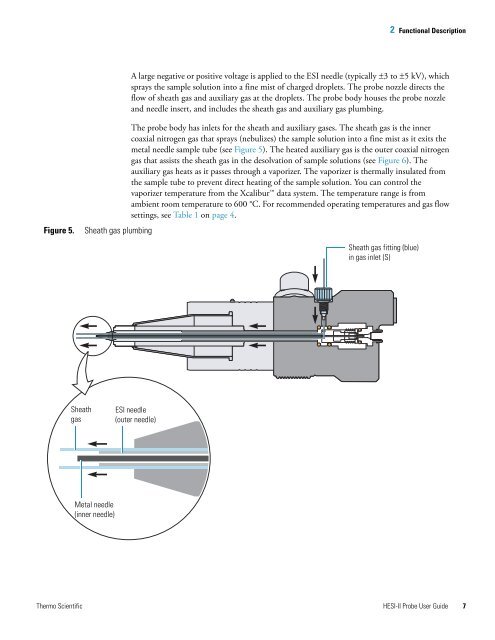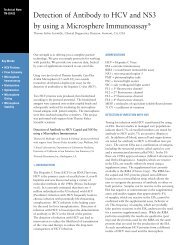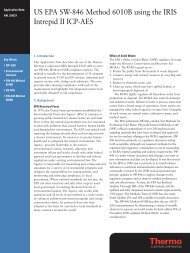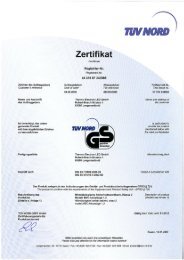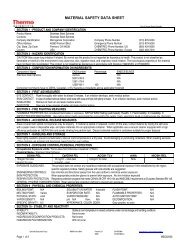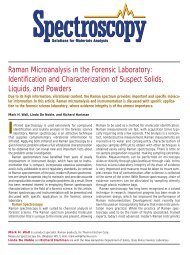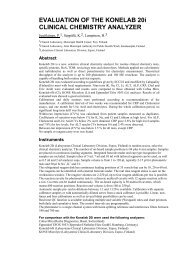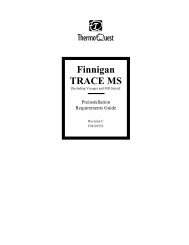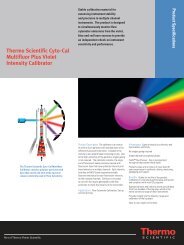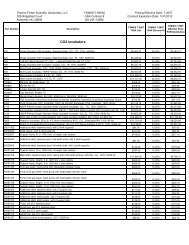HESI-II Probe User Guide - Thermo Scientific Home Page
HESI-II Probe User Guide - Thermo Scientific Home Page
HESI-II Probe User Guide - Thermo Scientific Home Page
Create successful ePaper yourself
Turn your PDF publications into a flip-book with our unique Google optimized e-Paper software.
Figure 5. Sheath gas plumbing<br />
Sheath<br />
gas<br />
Metal needle<br />
(inner needle)<br />
2 Functional Description<br />
A large negative or positive voltage is applied to the ESI needle (typically ±3 to±5kV), which<br />
sprays the sample solution into a fine mist of charged droplets. The probe nozzle directs the<br />
flow of sheath gas and auxiliary gas at the droplets. The probe body houses the probe nozzle<br />
and needle insert, and includes the sheath gas and auxiliary gas plumbing.<br />
The probe body has inlets for the sheath and auxiliary gases. The sheath gas is the inner<br />
coaxial nitrogen gas that sprays (nebulizes) the sample solution into a fine mist as it exits the<br />
metal needle sample tube (see Figure 5). The heated auxiliary gas is the outer coaxial nitrogen<br />
gas that assists the sheath gas in the desolvation of sample solutions (see Figure 6). The<br />
auxiliary gas heats as it passes through a vaporizer. The vaporizer is thermally insulated from<br />
the sample tube to prevent direct heating of the sample solution. You can control the<br />
vaporizer temperature from the Xcalibur data system. The temperature range is from<br />
ambient room temperature to 600 °C. For recommended operating temperatures and gas flow<br />
settings, see Table 1 on page 4.<br />
ESI needle<br />
(outer needle)<br />
Sheath gas fitting (blue)<br />
in gas inlet (S)<br />
<strong>Thermo</strong> <strong>Scientific</strong> <strong>HESI</strong>-<strong>II</strong> <strong>Probe</strong> <strong>User</strong> <strong>Guide</strong> 7


